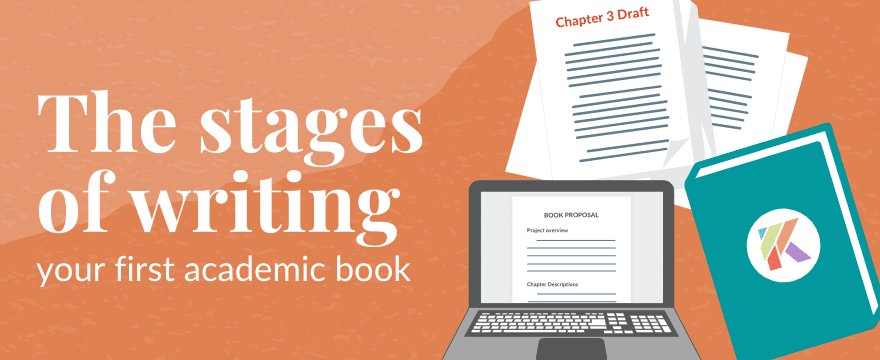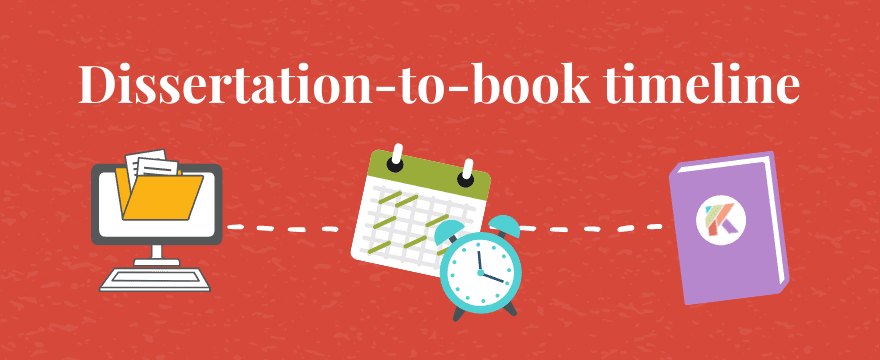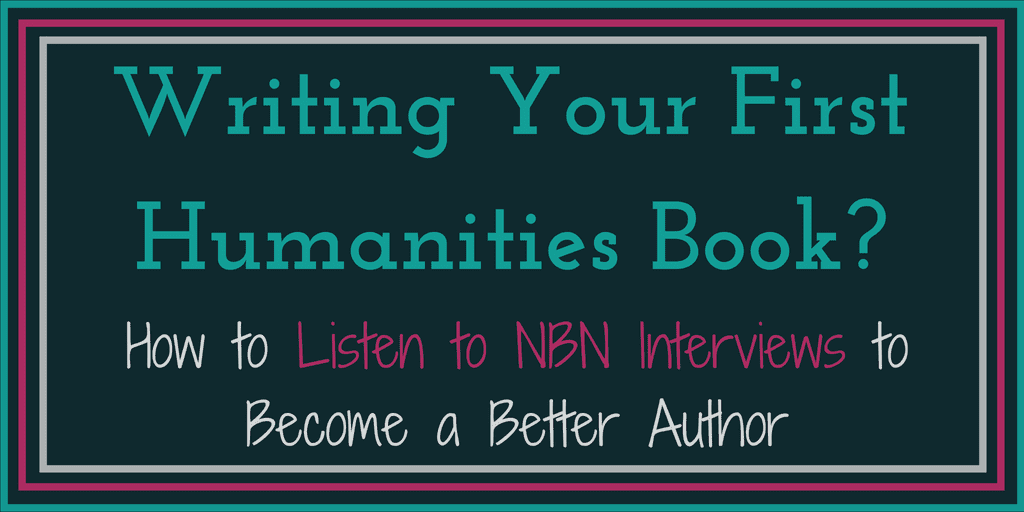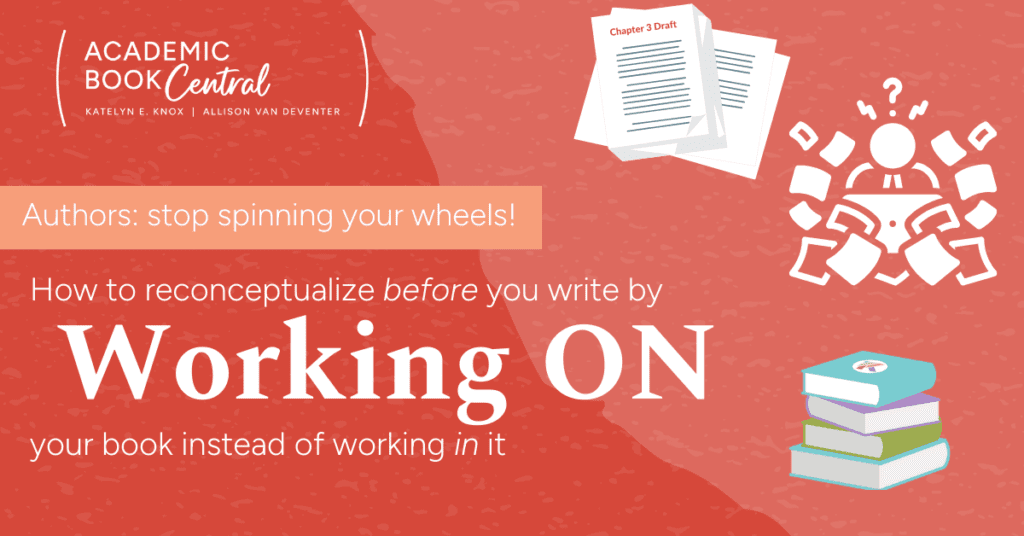From the outside, publishing your first academic book seems both straightforward and mysterious. Most first-time book authors associate one key moment–the book proposal–with the entire process.
Do it right? You’re good!
But publishing your first academic book is much more than the proposal alone.
This post breaks the journey down into the seven stages of publishing your first academic book.
Whichever stage you’re at, this article on publishing your first academic book will demystify the whole process and spare you unpleasant surprises. I tell you what’s most important at each stage, what not to waste your time on, and what usually trips first-time book authors up at each stage.
Ready? Let’s dive in!
Table of Contents
- Stage 0: Writing Your Dissertation
- Stage 1: Getting Set and Planning the Revisions
- Stage 2: Actively Drafting and Revising the Book Manuscript
- Stage 3: Preparing and Submitting the Book Proposal
- Stage 4: From Book Proposal to Book Contract
- Stage 5: Preparing and Delivering the Final Manuscript
- Stage 6: Copyediting, Final Formatting, and Preparing Publication
- Stage 7: Published Book Author
Stage 0: Writing Your Dissertation & Cultivating Writing Practices
You’re definitely ahead of the game if you’re already thinking about the dissertation to book transition this early.
Rather than trying to write your dissertation as a book to begin with, though, I recommend that you focus on building the foundation on which a successful book will rest: cultivating good writing habits.
Other Resources for Stage 0
- All Your Dissertation to Book Questions, Answered
- Resources for Establishing and Maintaining Good Productivity Habits
Stage 1: Working ON Your Book–Doing the “Big Picture Thinking”
Once you’ve completed your dissertation, it’s time to start planning your book revisions and completing the “big picture thinking” about the book your dissertation will become. This involves opening up your book, interrogating its dimensions (like structure, chapter order, etc.), and getting clear on your book’s argument and how each chapter advances it.
In The Dissertation-to–Book Workbook, we call this type of work “working ON” your book. You’re not really adding new words, but you’re rethinking the project in ways that will make “working IN” the book–that is, revising individual chapters–much more efficient.
What Not to Waste Your Time and Energy on in Stage 1
Do not send your unrevised dissertation to academic publishers. Do not prepare a proposal based on your unrevised dissertation, either.
(Learn why we think the book proposal is not the right genre for the “big picture thinking”)
Best Resources for Authors in Stage 1
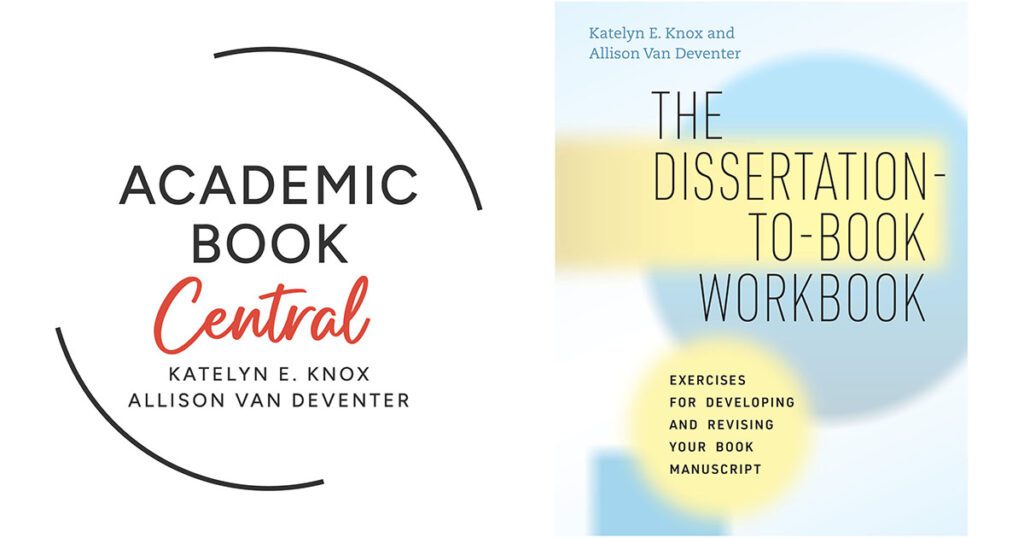
- Chapters 1–13 of The Dissertation-to-Book Workbook, which show you exactly how to distill and sharpen your book argument and thread it throughout its chapters.
- Our post on “working ON” your book.
- If you are going from dissertation to book, you need to read the first half of William Germano’s From Dissertation to Book (eBook). It helps you decide if you are going to publish an academic book at all.
- My post All Your Dissertation to Book Questions, Answered (Ultimate FAQ)
- Robert Boice’s Professors as Writers. This book was the most important thing I read in the summer before I began my first academic job. Seriously.
- All our posts on knowing what to expect of the publishing process.
Stage 2: Working IN Your Book– Revising (or Drafting) Your Manuscript
This is the longest stage of publishing your first academic book.
Once you get the 30,000-foot view on your manuscript, you’ll want to revise and draft your chapters efficiently. To make the most of your precious time, we highly recommend you use a technique we call “Chapter Collages,” which involves opening a new, blank document, outlining sections that will support your chapter argument, and pasting in paragraphs from your draft writing that support your sections. We outline a brief version in a post on how to know what to cut and what to keep in your chapters. Or, you can check out Chapters 14–15 of The Dissertation-to-Book Workbook for step-by-step exercises.
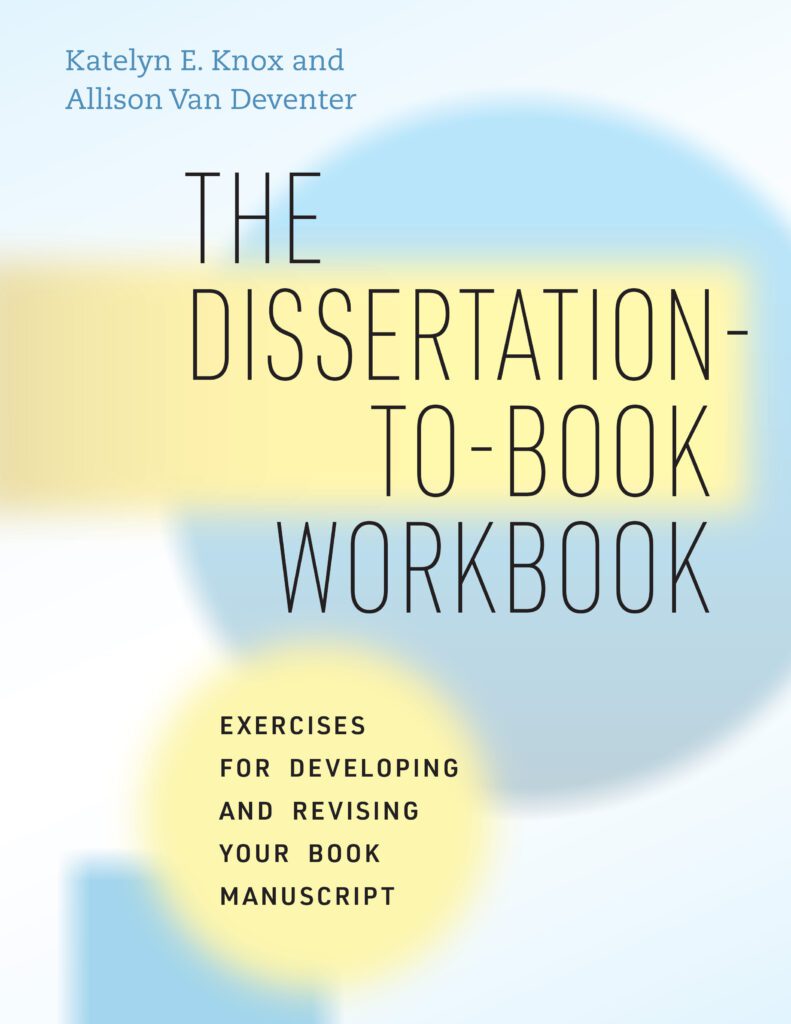
You will, of course, also eventually write a book proposal (see below). But because that genre is so distinct, we separate it out into its own stage.
Best Uses of Time and Energy in Stage 2
Because this stage lasts such a long time, you will want to also prioritize other scholarly activities that will help you publish your book.
- Attend conferences where you present portions of your book manuscript. Meet other scholars who might be willing to give you feedback on your chapters. Doing this will also you to generate interest for the book, which you will mention in your proposal.
- At these conferences, keep your ears open for talk about presses other scholars in your field have recently published with. Read the questions you should ask other scholars to rank university presses Note if you happen to meet series editors. Learn what to ask the authors who have secured contracts with your potential target presses.
- Prepare 1-2 articles for publication in journals your book’s target audience regularly reads. Publishing these articles will actually make your book proposal stronger because it will establish you as an expert in your fields. Then, learn how to transform your journal article into a book chapter.
- If interested, consider pitching articles on portions of your topic to editors of popular media outlets. You can also join HARO, a platform to connect reporters with experts in particular fields. Publishing articles for the general public is not required at all. But doing so can demonstrate the broad appeal of your topic and establish you as an expert in your fields. In turn, these popular articles can strengthen your proposals and make you eligible for certain grants, such as the NEH Public Scholar Program.
- Consider, at minimum, talking with editors at conferences. Talking is not necessarily the same as pitching.
Stage 3: Preparing and Submitting the Proposal
This stage spans from three months before you plan to submit your book proposal to the day you submit your book proposal.
Want a comprehensive guide where I answer all your questions about the proposal? See Academic Book Proposals: All Your Questions, Answered.
Best Uses of Time and Energy in Stage 3
- Mastering the proposal genre with Laura Portwood-Stacer’s The Book Proposal Book.
- Making sure you are targeting the right presses. Continue attending scholarly conferences and making connections in your fields. You should be actively interviewing recent book authors and senior scholars about presses.
- Researching your target university presses to prepare the strongest possible case for why your project in particular is a good fit for their lists.
Best Resources for Stage 3
- My series on finding an academic publisher by getting to know your book again through presses’ eyes, making your list of target academic publishers, researching your target presses to assess fit, and interviewing colleagues in your fields to rank presses.
- My article on the “competing works” section of academic book proposals.
- William Germano’s Getting it Published (eBook) which gives you insight into what editors are looking for.
Stage 4: Navigating the Proposal Outcome to Contract
Most everything from this stage forward could be lumped into “stuff you didn’t know you’d have to do.” Stage 4 was one of the most difficult for me personally, because I discovered a lot of steps I didn’t know existed. Generally speaking, stage 4 starts when you submit your book proposal and ends when you receive your book contract.
During this time, you’ll need need to wait for reader’s reports. Once you receive them, you’ll likely only have a few weeks to digest them and prepare a response letter.
Best Uses of Time and Energy in Stage 4
- Thinking about what will come after the book.
- Responding to reader reports.
- Researching and planning (but not necessarily actually making) any major revisions to the manuscript.
- Securing permissions for images and other copyrighted materials that appear in the book. This can take a long time, so start early.
- Much of stage 4 is outside your control. Practice (or develop) self-care routines, and channel creative energies into new projects.
Best Resources for Stage 4
- Chapter 13 of Laura Portwood-Stacer’s The Book Proposal Book gives excellent advice about navigating this stage.
- It’s also worth doing a deep dive into the archives of Laura Portwood-Stacer’s newsletter, which offers insight into many of the rarely discussed aspects of this process.
Stage 5: Preparing and Delivering the Final Manuscript
Congratulations! You have a contract, and now all you have to do is make the changes you promised, and submit the final manuscript.
Best Uses of Time and Energy in Stage 5
- Everything related to preparing and formatting the final manuscript.
- Securing high resolution image scans and copyright permissions (if applicable).
Stage 6: “The Slog,” or, Copyediting, Indexing your Academic Book, and Press Paperwork
Most first-time academic book authors find stage 6 the hardest of all. If you’re like me, then submitting your final manuscript felt like the “final hurdle.”
Unfortunately, it’s not.
Stage 6 is characterized by two parts: waiting while the manuscript is being formatted and copyedited and responding to queries and checking proofs.
Best Uses of Time and Energy in Stage 6
As soon as you submit your manuscript, you should immediately begin doing the four things you didn’t know you had to do. These include finding cover images, creating a list of scholars whom you or the press might contact about back cover blurbs, getting on an indexer’s calendar (if you will hire an indexer) and setting up your book’s marketing.
If you are not interested in doing your own index, you should apply for funds at your school to cover indexing fees. The press will not usually not pay for indexes. Finally, do take responding to queries and checking the proofs seriously.
Best Resources for Stage 6

Stage 7: You are a Published Book Author! Now What?
Congratulations! Your book is now out in the world and have received your author copies. For me, this stage was somewhat anticlimactic because in many ways, it felt like I had finished the book months prior.
In this stage, you should focus on two tasks. First, you should continue marketing your book. Be sure to send announcements to listservs (when appropriate) and work with your school’s press office. During the next two years, you will also submit your book for prizes. Know that it might take a long time (one year or more!) for reviews of your book to appear.
